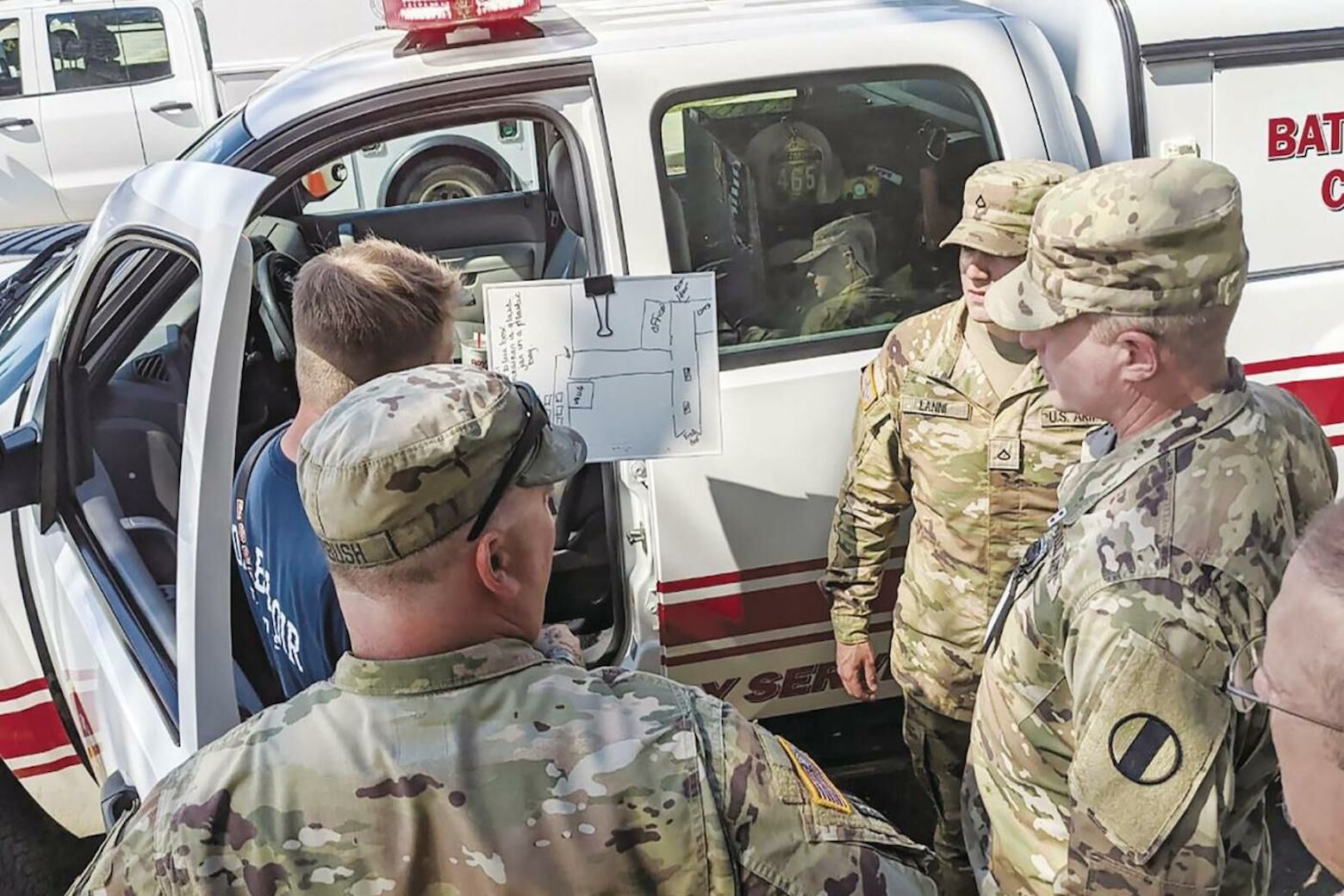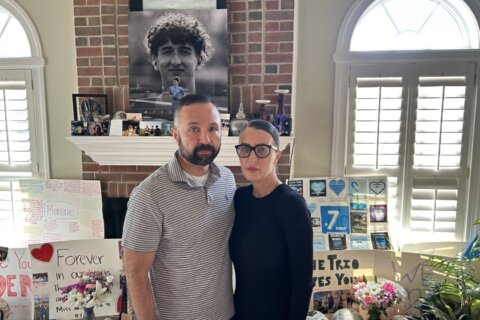This article was republished with permission from WTOP’s news partner InsideNoVa.com. Sign up for InsideNoVa.com’s free email subscription today.

This article was written by WTOP’s news partner InsideNoVa.com and republished with permission. Sign up for InsideNoVa.com’s free email subscription today.
Fort Belvoir’s 55th Ordnance Company (Explosive Ordnance Demolition) has received calls from museums before, but they are typically to ensure that Civil War relics such as cannonballs or World War II shells are truly inert and safe to display.
On June 2, however, Staff Sgt. Robert Torbush said he was alerted by Fort Belvoir Fire and Emergency Services about an explosive threat found in the Army Museum Support Center, which works with the new Museum of the U.S. Army on the installation.
“The call was initially reported to me as a vial of picric acid, which is a sensitive explosive that, when dried, becomes quite unstable,” Torbush said, adding that the fire department had already cleared the building. Torbush entered using a bomb suit, and what he actually found was an amber glass jar from World War I with gauze inside soaked in the acid, which was used to treat burns at that time.
“When it sits for that long, it has a tendency to form unstable salts,” Torbush said. “That made it hazardous to even open the jar, and it was determined that the best course of action was to move it to a safe area. We didn’t want to load it into a vehicle, because those explosive salts can be very sensitive.”
So, with Fort Belvoir Military Police escorting him from a safe distance, Torbush used an extendable pole to provide some distance between him and the jar, and walked down the road to the nearest safe distance from any nearby building, where his team used an explosive charge to dispose of it.
Between confirming the material involved, planning everyone’s actions, and receiving garrison permission to use an explosive, Torbush said it took about four hours to neutralize the threat.
Capt. Rafael Polo, commander of the 55th, said that Torbush and Private 1st Class Shayne Lanni did an outstanding job.
“Torbush rapidly assessed the situation and realized that this was a very unique response call that required research and study regarding the hazard,” Polo said. “The team properly identified the substances they were dealing with, and then calculated every move and action so as to make it the safest possible approach to eliminate the current threat.”
John Moeller, deputy to the garrison commander, said it was an interesting incident that ended well.
“I’m thankful that whoever was examining the medical trunk immediately recognized the danger,” Moeller said. “Who says history is boring?”
Paul Lara covers the military beat. Reach him at plara@insidenova.com







